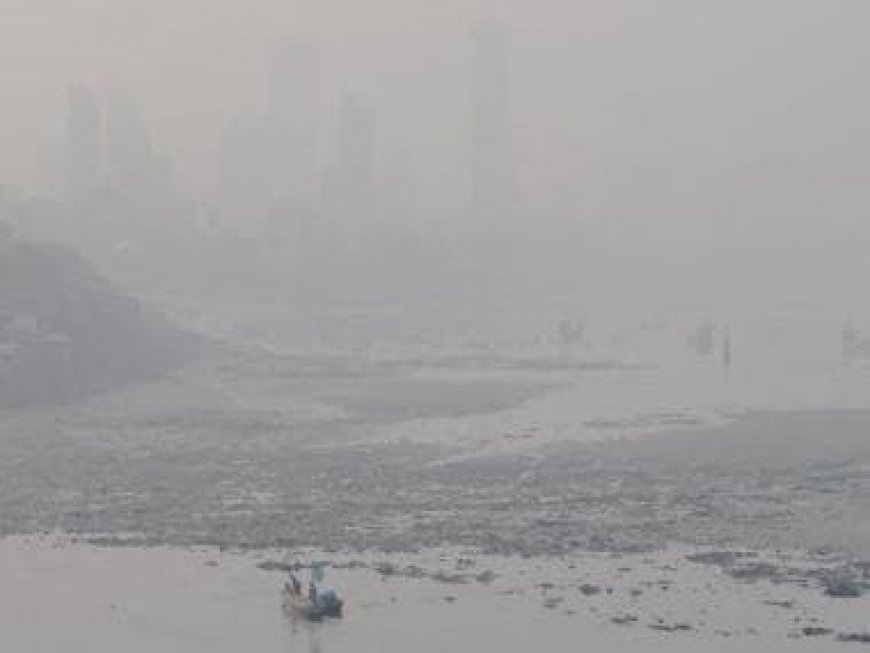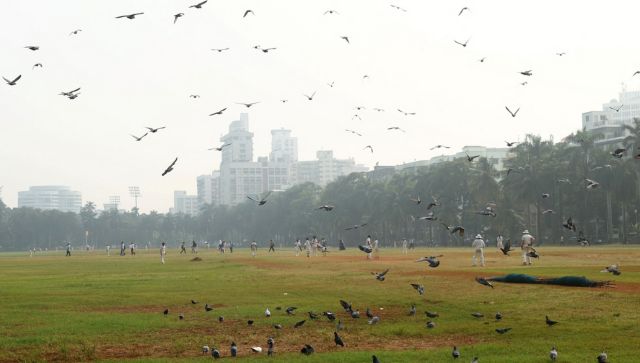What’s making Mumbai’s air worse than Delhi’s?
What’s making Mumbai’s air worse than Delhi’s?

It is hazy in Mumbai. The air quality in Maharashtra’s capital these days is worse than in Delhi.
The air quality in India’s financial capital plunged for a second consecutive day on Wednesday (18 October). A thick smog blanketing Mumbai’s skies also reduced visibility in many places.
But, why is this happening? Let’s take a closer look.
Mumbai’s air quality dips
Mumbai’s air quality stood at 194 in the ‘moderate’ category at 8 am today, reported Mid-Day. With 130 at 9 am, Delhi’s air quality index (AQI) was also in the ‘moderate’ category, as per Hindustan Times (HT).
Earlier in the day, the AQI at Mumbai’s Chhatrapati Shivaji Terminus (CST) area fell into the ‘very poor’ category. A health advisory was also issued warning people against “prolonged outdoor exposure” that may cause respiratory illness.
#WATCH | Maharashtra: Visuals from Mumbai’s Chhatrapati Shivaji Terminus (CST) area as the Air Quality Index dips to ‘Very Poor’ category. pic.twitter.com/78VjD0N220
— ANI (@ANI) October 18, 2023
Air quality at Kalanagar in the Bandra Kurla area reached 178, while moderate air was reported in Worli, Bhandup and Borivali with AQI at 139, 131, 135 respectively, Mint cited the System of Air Quality Forecast and Research (SAFAR) as saying.
‘Very poor’ air was recorded in several places as AQI touched 346 in Andheri, 311 in Navi Mumbai, and 307 in Mazgaon.
Foggy weather also delayed local trains by 15 minutes beyond Kalyan in the Mumbai suburban network, a railway official said.
Central Railway chief public relations officer Dr Shivraj Manaspure told PTI that haze was seen between Vashind and Titwala in the Thane district adjoining Mumbai; and between Karjat in Raigad district and Thane’s Badlapur in the early morning.
Delhi level air quality in Mumbai pic.twitter.com/1xMu8wXtvb
— Vishal Bhargava (@VishalBhargava5) October 17, 2023
Mumbai’s air quality which stood at 113 was worse than Delhi (89) even on Tuesday. According to SAFAR, parts of Mumbai’s suburbs reported “very poor” AQI yesterday, with Andheri at 346, Mazgaon at 317 and Navi Mumbai at 317, according to a Times of India (TOI) report.
While the suburbs of Chembur and Malad witnessed poor air quality, the AQI in Bandra-Kurla Complex, Borivali, Worli, Bhandup and Colaba was moderate, the report added.
At 165, Delhi’s AQI was higher than Mumbai which stood at 115 on Monday.
Why has Mumbai’s air worsened?
As per TOI, experts have blamed lower wind speed and increased humidity, along with a thick smog cover, for Mumbai’s “suffocating day” on Tuesday.
The cold wind coming from the Western Ghats hit warmer air along the coast, thus leading to dust pollution, the newspaper reported citing experts.
“As a result, warmer air with dust and smoke remained stagnant over the coastal Mumbai,” experts told TOI.

The phenomenon called “air inversion” or temperature inversion is behind the smog engulfing Mumbai these past few days, as per Mid-Day. This occurs when the cool air gets “capped” close to the ground under a layer of warm layer above the surface.
“As pollutants from vehicles, fireplaces, and industry are emitted into the air, the inversion traps these pollutants near the ground, resulting in poor air quality,” climatologist Rajesh Kapadia was quoted as saying by Mid-Day.
According to Kapadia, it is “unusual” for Mumbai to witness temperature inversion at this time of the year, which is more common during the winter months of November or December.
What about Delhi?
At 130, Delhi’s AQI plunged to ‘moderate’ category on Wednesday, as compared to satisfactory air reported a day before.
The Air Quality Early Warning System has notified that air quality will further drop to ‘poor’ category by Thursday in the National Capital. “The predominant surface wind is likely to be coming from Northwest directions in Delhi with wind speed 08-16 kmph,” an official said, as per HT.
A study by the Central Pollution Control Board (CPCB) released earlier this month found Delhi, Faridabad, Ghaziabad, Noida and Meerut to be India’s top five most-polluted cities. Bihar’s Patna and Muzaffarpur, Nalbari in Assam, Asansol in West Bengal, and Madhya Pradesh’s Gwalior were also in the top 10 list.
As per the study, October to December are the “peak pollution” months, reported Business Standard.
With inputs from agencies
What's Your Reaction?


























































